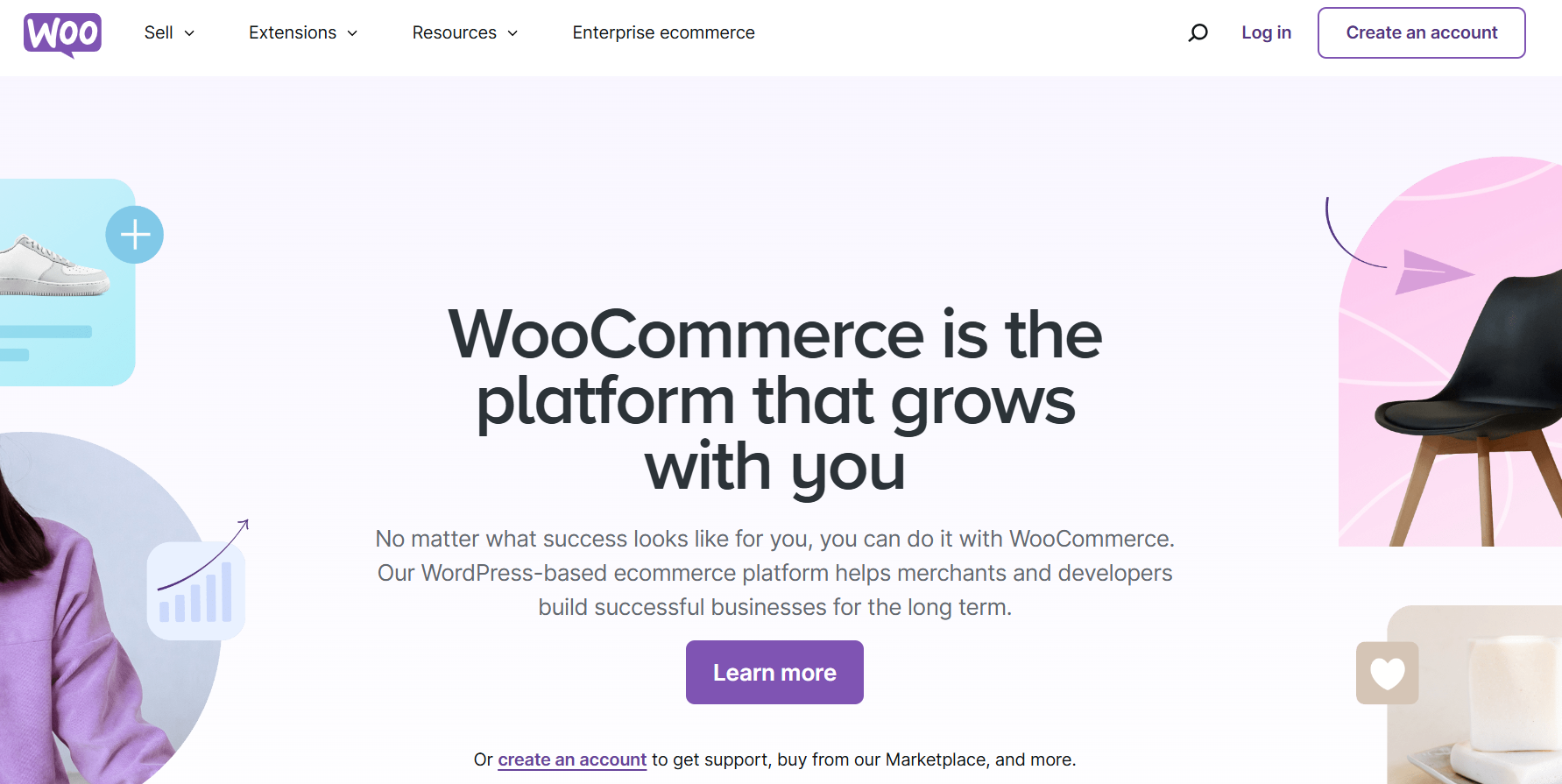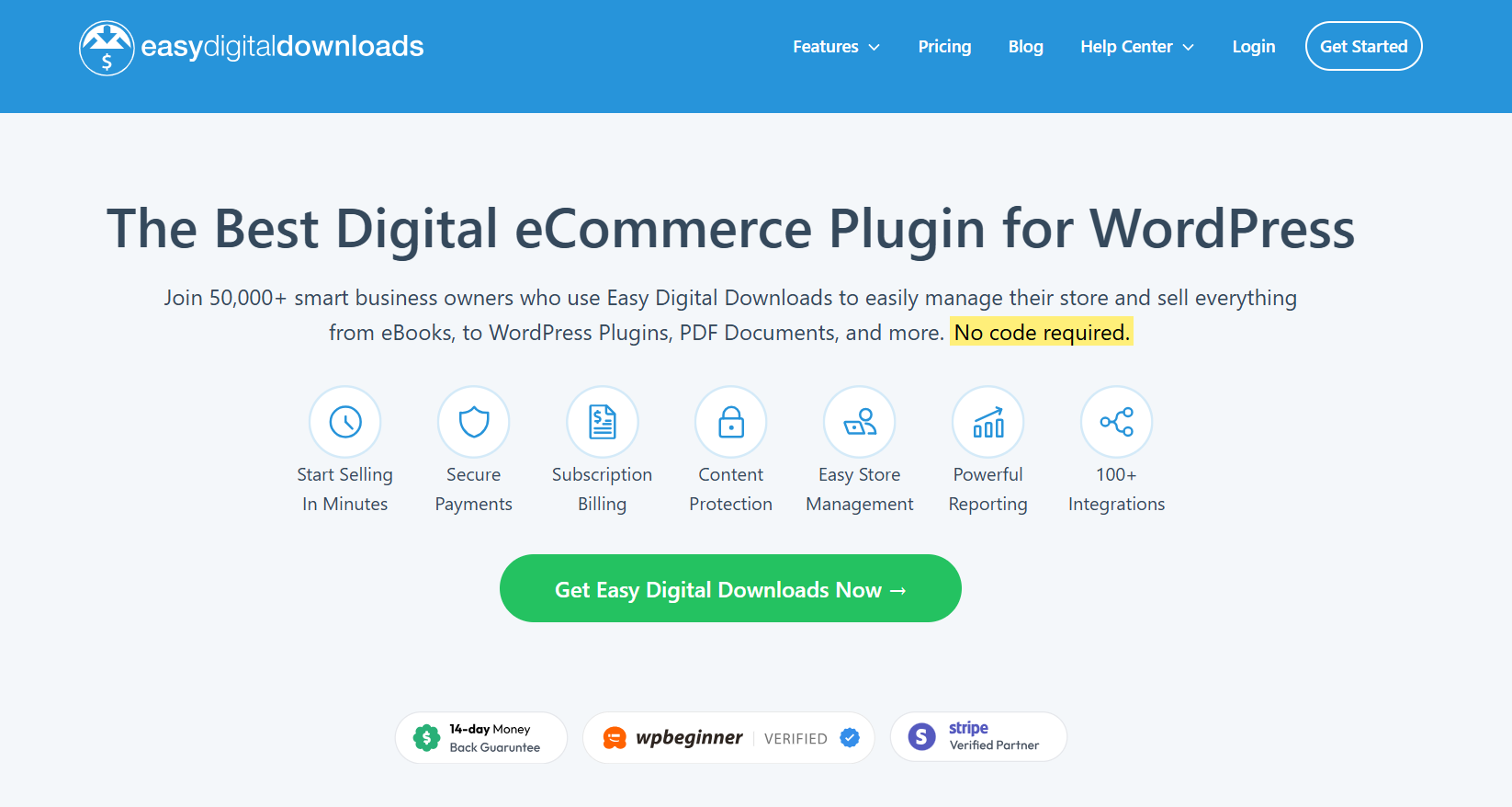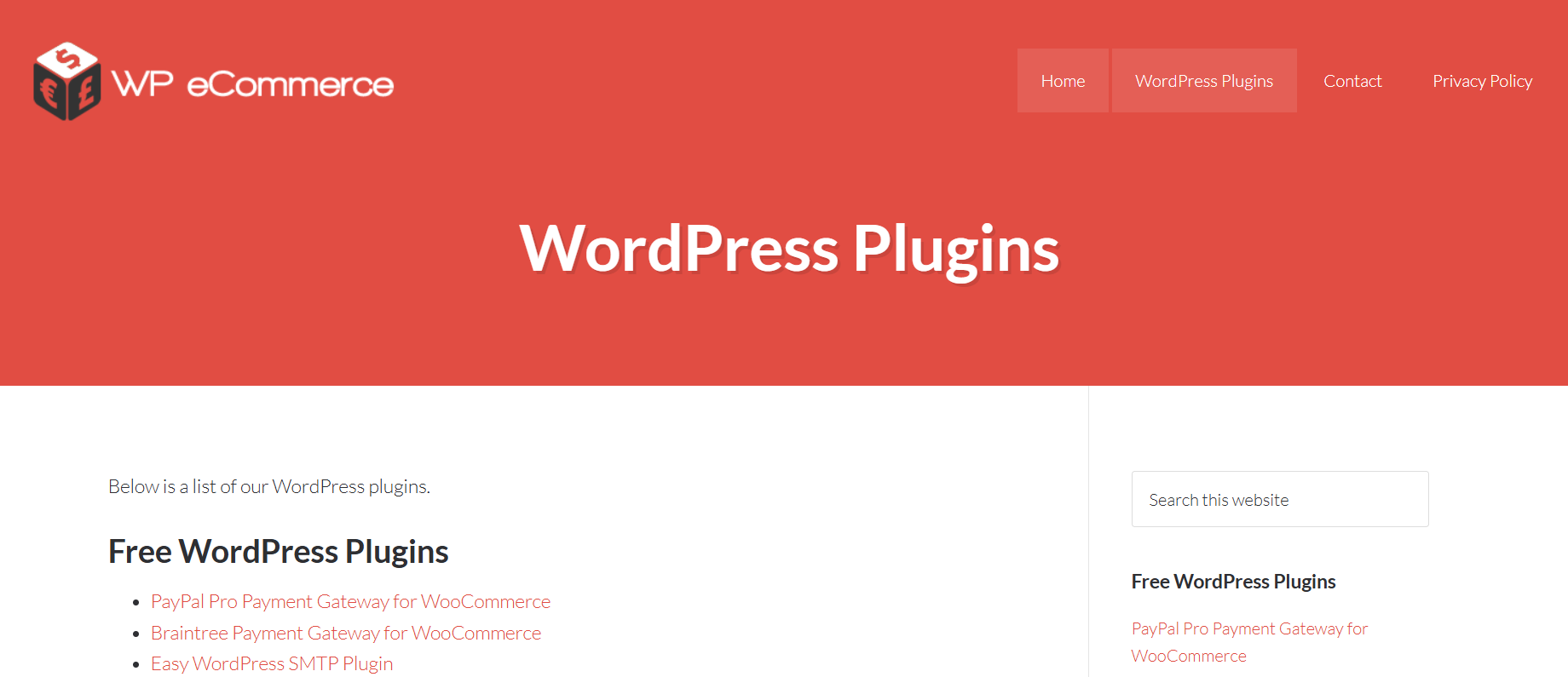WordPress ecommerce has become a popular way for businesses to sell products online. It combines the power of WordPress with ecommerce features to create online stores. WordPress ecommerce platforms like WooCommerce let users build custom stores and sell physical or digital goods.
These platforms offer many tools to help store owners succeed. Users can pick from lots of themes and add-ons to make their shops look good and work well. They can also set up payments, shipping, and taxes to run their business smoothly.
This article explores key tools like WooCommerce, guiding users through setup, product management, and payment processing. It also covers strategies for enhancing user experience, marketing, and compliance to help businesses create and grow successful online stores.
FAQ
What are the best ecommerce plugins for WordPress? How to choose ecommerce templates for WordPress? What is the pricing for WordPress ecommerce solutions? Can you provide examples of WordPress ecommerce websites? How does WordPress ecommerce compare to Shopify? Are there free ecommerce options for WordPress? What are the best ecommerce themes for WordPress? Is WordPress suitable for online stores? Is WordPress.com a good platform for ecommerce? What is the typical cost of a WordPress ecommerce site?

Create your online store in minutes!
Looking to sell online? Develop and launch your store with 10Web AI Ecommerce Website Builder.
Understanding WordPress ecommerce
WordPress ecommerce lets you create online stores using the popular content management system. It combines WordPress’s flexibility with powerful shopping features.

Overview of ecommerce platforms
Ecommerce platforms help businesses sell products online. Some popular options include Magento, and WooCommerce for WordPress. Each platform has its own strengths.
Shopify offers an all-in-one solution that’s easy to set up. Magento provides advanced features for large enterprises. WooCommerce turns a WordPress site into an online store.
WooCommerce is free to install and use. It works with many WordPress themes and plugins. This makes it very flexible for different types of stores.
Benefits of using wordpress for ecommerce
WordPress powers over 40% of all websites. This makes it a trusted choice for online stores too. It offers many upsides for ecommerce:
- Easy to use: If you know WordPress, you can learn WooCommerce quickly.
- Customizable: Thousands of themes and plugins let you create a unique store.
- SEO-friendly: WordPress helps your store rank well in search results.
- Cost-effective: Start selling without big upfront costs.
WordPress ecommerce scales well. It works for small shops and big online retailers. You can add features as your store grows.
Setting up an ecommerce site on WordPress
Setting up an ecommerce site on WordPress involves several key steps. These include choosing a hosting provider, installing WordPress, picking an ecommerce plugin, and customizing your site’s design.
Choosing a hosting provider
Picking the right hosting provider is important for your WordPress ecommerce site. Good hosting helps your store run fast and stay online. Some popular options for WordPress ecommerce hosting are 10Web, Bluehost, and SiteGround.
Look for a host that offers:
- Fast loading speeds
- Strong security features
- Good customer support
- Easy WordPress installation
- Ecommerce-friendly features
Make sure the host can handle the traffic and data needs of an online store. Many hosts have special plans for ecommerce sites that include extra storage and security.
Installing WordPress
Once you’ve chosen a host, you’ll need to install WordPress. Many hosts offer one-click WordPress installation. This makes the process quick and easy.
To install WordPress:
- Log in to your hosting account
- Find the WordPress installer tool
- Click Install
- Choose your site settings
- Set up your admin account
After installation, you can log in to your new WordPress site. From there, you can start adding plugins and setting up your store.
Selecting an ecommerce plugin
The next step is to add ecommerce features to your WordPress site. WooCommerce is a popular and free plugin for this. It works well with many WordPress themes and is easy to use.
- Go to Plugins in your WordPress dashboard
- Click Add New
- Search for WooCommerce
- Click Install Now, then Activate
After activation, WooCommerce will guide you through setting up your store. You’ll add basic info like your address and what you sell. You can also set up payments and shipping at this point.
Themes and design customization
The look of your store is important. You want it to match your brand and be easy for customers to use. There are many WordPress themes made for ecommerce sites.
- Go to Appearance > Themes in WordPress
- Click Add New
- Search for ecommerce themes
- Preview themes you like
- Install and activate your chosen theme
After activating your theme, you can customize it. Use the WordPress Customizer to change colors, fonts, and layouts. Many themes also have their own settings panels for more options.
Remember to make your design mobile-friendly. More and more people shop on phones, so your site needs to work well on small screens.

Create your online store in minutes!
Looking to sell online? Develop and launch your store with 10Web AI Ecommerce Website Builder.
Top 3 WordPress ecommerce plugins
WordPress ecommerce plugins let you turn a regular website into an online store. These tools add shopping cart features, product pages, and payment processing to WordPress sites.
WooCommerce
WooCommerce is the most popular WordPress ecommerce plugin. It’s free and works with many WordPress themes. The plugin lets you sell physical and digital products.

WooCommerce has basic features like product pages, shopping carts, and checkout. You can add more functions with extensions. These include inventory tracking, shipping calculators, and sales reports.
The plugin handles payments through PayPal and Stripe. It also works with many other payment gateways. WooCommerce is good for small to medium-sized stores. Large businesses may need extra plugins or custom code for complex needs.
| Pros | Cons |
| Free core plugin | Can slow down site if not optimized |
| Lots of extensions | Some features need paid add-ons |
| Works with many themes | Setup can be complex for beginners |
Easy Digital Downloads
Easy Digital Downloads (EDD) is made for selling digital goods. It’s great for ebooks, software, music, and other downloads. The plugin has a clean interface that’s easy to use.

EDD includes file protection to keep your digital products safe. It also has tools for license key generation and software updates. The plugin offers various payment options including PayPal and stripe.
You can extend EDD with add-ons. These include features like recurring payments and multi-vendor support. EDD is best for creators and small businesses focused on digital products.
| Pros | Cons |
| Focused on digital products | Not ideal for physical goods |
| Built-in file protection | Some key features need paid add-ons |
| License key management | Limited themes designed for EDD |
WP ecommerce
WP ecommerce is one of the oldest WordPress shopping cart plugins. It offers a range of features for both digital and physical products. The plugin is known for its simplicity and ease of use.

WP ecommerce includes product pages, shopping carts, and checkout systems. It also offers inventory management and shipping calculators. The plugin works with many payment gateways including PayPal and authorize.net.
You can extend WP ecommerce with add-ons. These include features like wishlists and product reviews. The plugin is suitable for small to medium-sized stores selling various types of products.
| Pros | Cons |
| Easy to set up | Fewer extensions than WooCommerce |
| Works with physical and digital goods | Some users report performance issues |
| Free core plugin | Less frequent updates than competitors |
Business growth with WooCommerce
For developers and merchants looking to grow globally, WooCommerce offers features like multi-currency support, geolocation tools, and translation plugins. These capabilities enable seamless store building for international audiences, making it easier to tap into new markets.
To optimize conversions, WooCommerce integrates upselling, cross-selling, and abandoned cart recovery tools. By simplifying the customer journey and building trust with features like customer reviews, merchants can create successful businesses with higher sales and repeat customers.
Marketing and SEO are essential for online selling success, and WooCommerce delivers with seamless integration. Merchants can leverage email marketing platforms, SEO plugins, and social media tools to attract and retain customers, ensuring their WordPress-based ecommerce platform reaches its full potential.
With built-in analytics and scalability, WooCommerce empowers developers and merchants to monitor growth and adapt their strategies. Its flexibility ensures successful businesses can thrive as they scale, making WooCommerce a go-to solution for online selling ventures.
Expert assistance
WooCommerce users have access to a wealth of expert help and support, making it easier for merchants and developers to unlock the full potential of this WordPress-based ecommerce platform. Whether you’re just starting your online selling journey or managing a growing store, expert assistance can help you tackle challenges and optimize your business.

The WooCommerce community is a valuable resource for store building. With thousands of experienced developers and contributors, users can find solutions to common issues, access tutorials, and get advice on best practices. Additionally, WooCommerce’s extensive documentation provides step-by-step guides for setting up and managing stores effectively.
For more personalized support, merchants can hire WooCommerce experts who specialize in customizations, integrations, and troubleshooting. These professionals can help tailor your store to your business needs, ensuring a seamless experience for both you and your customers.
WooCommerce also offers premium support plans that provide direct access to the platform’s team. These plans are ideal for businesses needing quick resolutions to technical issues or guidance on advanced features. This combination of community-driven and professional assistance ensures that every user, regardless of experience level, can build and maintain a successful business with WooCommerce.
WooCommerce trustworthiness
WooCommerce has earned its reputation as one of the most reliable and trusted WordPress-based ecommerce platforms for building successful online stores. With millions of merchants worldwide relying on it, WooCommerce stands out for its consistent performance, robust security, and flexibility.
As an open-source platform, WooCommerce benefits from a global community of developers constantly refining its features and addressing potential vulnerabilities. This collaborative ecosystem ensures the platform remains up-to-date and secure, giving merchants peace of mind when managing their online selling ventures.
WooCommerce’s integration with WordPress further strengthens its trustworthiness. The platform leverages WordPress’s proven reliability, powering over 40% of websites globally. Its seamless compatibility with various themes and plugins makes it a dependable choice for merchants aiming to build scalable and customizable stores.
Additionally, WooCommerce prioritizes security with regular updates, PCI-compliant payment gateways, and robust data protection measures. These features help merchants maintain safe and reliable transactions, fostering customer trust and loyalty.
With its extensive track record, WooCommerce remains a trusted platform for merchants looking to build and grow successful businesses in the competitive world of ecommerce.

Create your online store in minutes!
Looking to sell online? Develop and launch your store with 10Web AI Ecommerce Website Builder.
Product management in WordPress
Product management is a key aspect of running an online store with WordPress. It involves adding items, organizing them effectively, and showcasing products with images and galleries.
Adding products
To add products in WordPress, go to the Products section in your dashboard. Click Add New to create a product. Fill in details like name, price, and description. Set product type (simple, variable, downloadable). Add SKU for inventory tracking. Choose tax status and shipping options. Use the product data section to set up variations for different sizes or colors. Save your product when finished.
WordPress lets you bulk add products too. Use the Import tool to upload a CSV file with product details. This saves time for stores with many items. You can also use plugins to add extra product fields or customize the add product page to fit your needs.
Organizing products
Good product organization helps customers find what they want. Use categories to group similar items. Add tags for more specific grouping. Both help with site navigation and search. Create a clear category structure – start broad, then get more specific.
You can also make product attributes. These are things like color, size, or material. Attributes help with filtering and searching. They’re useful for variable products too. WordPress lets you manage all this from the Products menu. You can edit categories, tags, and attributes there.
Product images and galleries
Good product photos are vital for online sales. WordPress makes adding images easy. Set a main product image that shows up in catalogs. Add more photos to create a gallery. Customers can then see the item from different angles.
Use high quality, well-lit photos. Show the product in use if possible. WordPress automatically makes different image sizes. This helps your store load fast on all devices. You can also add alt text to images. This helps with SEO and makes your store more accessible.
Some themes and plugins add extra gallery features. These might include zoom, 360-degree views, or video. Pick options that work best for your products and customers.
Payment processing solutions
WordPress ecommerce sites need reliable ways to accept payments online. Several options exist for handling transactions securely and efficiently.
Payment gateway integration
WordPress sites can connect to payment gateways to process credit card and other transactions. Popular options include PayPal, Stripe, and Authorize.Net. These gateways let customers pay directly on your site without going to a separate page.
To add a gateway, you install a plugin for that service. The plugin links your WordPress store to the payment provider’s system. You then set up your account details in the plugin settings.
Most gateways support major credit cards. Some also allow other payment types like digital wallets or bank transfers. Fees vary but typically include a percentage of each sale plus a small fixed amount.
Managing transactions
Once integrated, you can track payments through your WordPress dashboard. This gives you a central place to view orders, process refunds, and handle disputes.
Some gateways offer more advanced features. These may include:
- Recurring billing for subscriptions
- Saved payment methods for repeat customers
- Detailed sales reports and analytics
For high-volume stores, consider a plugin that consolidates data from multiple gateways. This can simplify bookkeeping and financial tracking.
Security and PCI compliance
Protecting customer payment data is critical for online stores. Payment gateways handle much of this burden by securely processing sensitive info.
Still, your WordPress site plays a role in transaction security. Key steps include:
- Using SSL encryption site-wide
- Keeping WordPress and plugins updated
- Following PCI DSS guidelines if storing any payment data
Many gateways offer tools to scan your site for vulnerabilities. They may also provide fraud protection services to flag suspicious transactions.
Enhancing user experience
A great user experience is key for any online store. It helps customers find what they need and makes buying easy. Let’s look at some ways to improve the experience for shoppers on your WordPress ecommerce site.

Responsive design
A responsive design makes your site look good on all devices. This is important because many people shop on phones and tablets. Your site should adjust to fit different screen sizes.
Use a responsive WordPress theme for your store. These themes change layout based on the device. They make sure text is readable and buttons are easy to tap on small screens.
Test your site on different devices to catch any issues. Check that images resize properly and menus work well on mobile. Make sure product pages are easy to use on phones.
Speed is also key for mobile users. Optimize images and use caching to make your site load fast on all devices.
Checkout optimization
The checkout process can make or break a sale. A smooth checkout keeps customers from leaving before buying. Here are some ways to improve it:
- Offer guest checkout. Don’t force people to create accounts.
- Use a one-page checkout if possible. This makes the process feel faster.
- Show a progress bar so people know how many steps are left.
- Only ask for needed info. Too many fields can be off-putting.
- Offer multiple payment options like credit cards and PayPal.
Make sure error messages are clear if something goes wrong. Tell people exactly what to fix.
Test your checkout on different devices. Make sure it’s easy to use on phones.
Customer support and services
Good support can turn a one-time buyer into a loyal customer. Here are some ways to improve your support:
Add a live chat option to your site. This lets people get quick answers while shopping.
Create a detailed FAQ page. Cover common questions about shipping, returns, and your products.
Make your contact info easy to find. Include an email and phone number if possible.
Offer clear shipping and return policies. Let people know what to expect before they buy.
Consider adding product reviews to your site. These help customers make choices and boost trust.
Use email to keep in touch after a sale. Send shipping updates and ask for feedback.

Create your online store in minutes!
Looking to sell online? Develop and launch your store with 10Web AI Ecommerce Website Builder.
Marketing and SEO strategies
Getting your WordPress ecommerce store noticed online takes effort. A mix of search optimization, social media, and email can help bring in more customers.
Search engine optimization (SEO)
Good SEO helps your store show up in search results. Use keywords in your product titles and descriptions. Make sure your site loads fast on mobile devices. Add alt text to product images. Create unique content for each product page.
Use SEO plugins to check your site’s performance. These tools can point out issues to fix. They also help you create sitemaps and metadata.
Write blog posts about topics related to your products. This gives search engines more content to index. It also shows your expertise to customers.
Social media integration
Social media connects you with customers. Add social sharing buttons to product pages. This lets people easily share items they like.
Post regularly on platforms where your target customers spend time. Share new products, sales, and behind-the-scenes content. Respond to comments to build relationships.
Use social media ads to reach new people. You can target ads based on interests, location, and more. This helps you find potential customers.
Email marketing
Email is a powerful way to stay in touch with customers. Offer a discount to people who sign up for your list. Send welcome emails to new subscribers.
Create different email campaigns. You might have one for new products and another for sales. Send abandoned cart reminders to people who don’t finish checking out.
Use email to ask for reviews after purchases. Good reviews help build trust with new customers. They can also improve your SEO.
Test different subject lines and email designs. See what gets the most opens and clicks. Use this info to improve future emails.
Maintaining your ecommerce site
Keeping your WordPress ecommerce site running smoothly requires ongoing attention. Regular upkeep ensures your online store stays secure, performs well, and recovers quickly from any issues.
Performance monitoring
Watching your site’s speed and responsiveness is key. Use tools like Google PageSpeed Insights to check load times. Look at reports in your WordPress dashboard to spot slow pages or plugins.
Keep an eye on your hosting resources. As your store grows, you may need more bandwidth or server power. Check CPU and memory usage regularly.
Monitor your site traffic patterns. Identify peak shopping times and prepare for increased loads. Use caching plugins to speed up page delivery during busy periods.
Set up alerts for any downtime. Quick response to outages keeps customers happy and sales flowing.
Security updates
Install updates for WordPress core, themes, and plugins as soon as they’re available. These often fix security holes that hackers can exploit.
Use strong passwords for all admin accounts. Change them every few months. Enable two-factor authentication for extra protection.
Install a security plugin to scan for malware and block suspicious activity. Popular options include Wordfence and Sucuri.
Keep your SSL certificate current. This encrypts data between your site and customers’ browsers. An expired certificate can scare off shoppers.
Backup and recovery procedures
Set up automatic daily backups of your entire site. This includes files and database. Store backups in a separate location from your main hosting.
Test your backup restore process regularly. Make sure you can quickly get your store back online if needed.
Keep multiple backup versions. Sometimes issues aren’t noticed right away. Older backups can be valuable.
Document your recovery steps. Write out the process so anyone on your team can follow it in an emergency.
Consider a staging site for testing updates and changes before applying them to your live store.
Analytics and reporting
Tracking key metrics and analyzing data helps online stores make smart decisions. WooCommerce offers built-in reports and integrates with popular analytics tools to give store owners valuable insights.

Understanding ecommerce metrics
Sales revenue is a top metric to monitor. It shows total income before expenses. Average order value reveals how much customers typically spend per purchase. Conversion rate measures the percentage of visitors who make a purchase.
Customer acquisition cost tracks how much you spend to gain new customers. Customer lifetime value estimates how much a customer is worth over time. Cart abandonment rate shows the percentage of shoppers who add items to their cart but don’t complete the purchase.
Tracking these metrics over time helps identify trends and areas for improvement. Store owners can set goals and measure progress. Comparing metrics to industry benchmarks provides context on performance.
Using analytics plugins
WooCommerce includes basic sales reports in the dashboard. For more detailed data, analytics plugins offer advanced features. MonsterInsights connects WordPress to Google Analytics for in-depth tracking. It shows top products, revenue by channel, and conversion rates.
Metorik provides customizable reports and automated emails. Store owners can segment customers and analyze their behavior. The plugin tracks inventory, shipping, and refunds.
Enhanced ecommerce Google Analytics adds ecommerce-specific reports to Google Analytics. It shows product performance, shopping behavior, and checkout funnels. The data helps optimize product pages and the checkout process.

Create your online store in minutes!
Looking to sell online? Develop and launch your store with 10Web AI Ecommerce Website Builder.
Legal and compliance considerations
Running a WordPress ecommerce store comes with legal obligations. Shop owners need to follow laws and regulations to protect customers and stay out of trouble.
Privacy policies
Online stores must have clear privacy policies. These tell customers how their data is collected and used. A good policy explains what info is gathered, why it’s needed, and how it’s kept safe. It should cover cookies, email lists, and payment details.
Privacy policies need to follow laws like GDPR in Europe and CCPA in California. These laws give customers rights over their data. Stores must let people see, change, or delete their info.
It’s smart to use a privacy policy generator made for ecommerce. This helps create a policy that fits your store. Make sure to update it when laws change or you add new features.
Terms of service
Terms of service set rules for using your online store. They protect your business and inform customers. Key parts include:
- Return and refund policies
- Shipping info
- Rules about user accounts
- Limits on liability
- Copyright notices
Be clear about what customers can expect. Explain your policies in simple terms. This builds trust and cuts down on disputes.
Keep terms up-to-date as your business grows. Review them regularly to make sure they still fit your needs.
Taxation and accounting
Ecommerce taxes can be tricky. Different countries and states have their own rules. You need to know where you owe taxes and how much.
Set up a system to track sales and collect the right taxes. Many WordPress plugins can help with this. They can figure out tax rates based on where customers live.
Keep good records of all sales and expenses. This makes tax time easier and helps if you get audited. Think about working with an accountant who knows ecommerce rules.
Don’t forget about the sales tax nexus. This means you might owe taxes in places where you do a lot of business, even if you’re not based there.
Conclusion
WordPress ecommerce offers a powerful, flexible, and cost-effective way to build and grow online stores, catering to businesses of all sizes. By leveraging the right plugins, optimizing for user experience, and following best practices for setup, marketing, and compliance, you can create a thriving ecommerce platform tailored to your needs. With tools like WooCommerce and a wealth of resources at your disposal, WordPress remains a trusted and versatile solution for online selling success.














